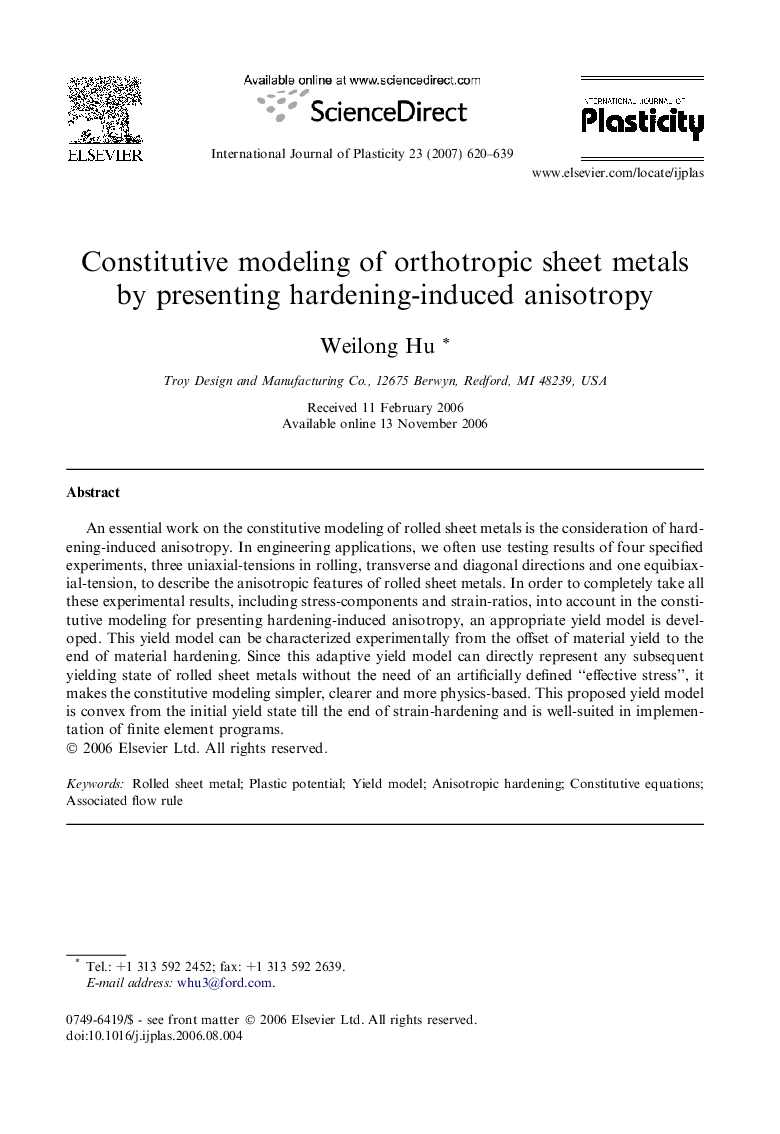| Article ID | Journal | Published Year | Pages | File Type |
|---|---|---|---|---|
| 786380 | International Journal of Plasticity | 2007 | 20 Pages |
An essential work on the constitutive modeling of rolled sheet metals is the consideration of hardening-induced anisotropy. In engineering applications, we often use testing results of four specified experiments, three uniaxial-tensions in rolling, transverse and diagonal directions and one equibiaxial-tension, to describe the anisotropic features of rolled sheet metals. In order to completely take all these experimental results, including stress-components and strain-ratios, into account in the constitutive modeling for presenting hardening-induced anisotropy, an appropriate yield model is developed. This yield model can be characterized experimentally from the offset of material yield to the end of material hardening. Since this adaptive yield model can directly represent any subsequent yielding state of rolled sheet metals without the need of an artificially defined “effective stress”, it makes the constitutive modeling simpler, clearer and more physics-based. This proposed yield model is convex from the initial yield state till the end of strain-hardening and is well-suited in implementation of finite element programs.
